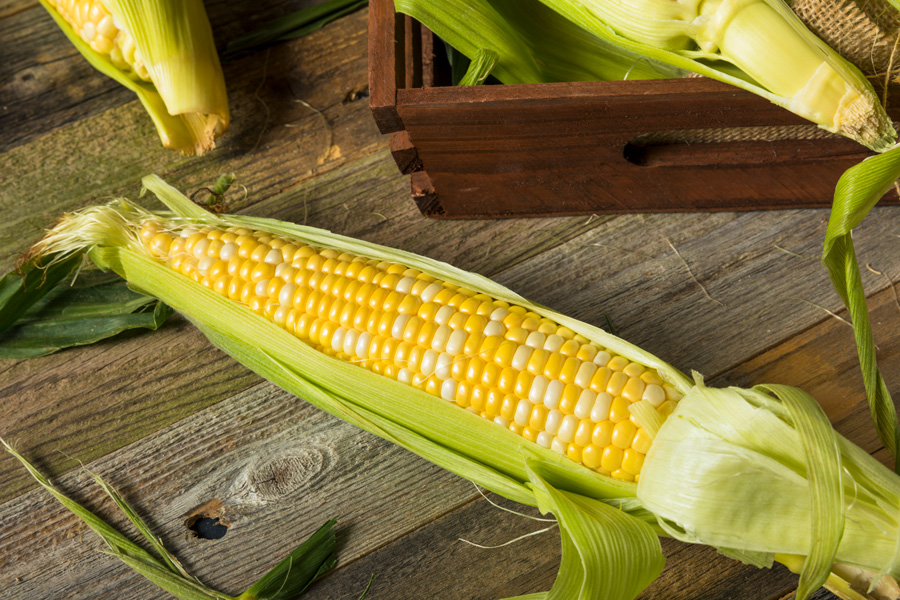Corn
-

Summarizes shipper sweet corn production in southern Georgia.
Tim Coolong and Theodore Mcavoy
|
-

A farm’s return on investment is directly affected by the way water is applied to its crops. The wrong end-gun settings can result in overwatering or underwatering large portions of field acres. Clogged or partially clogged nozzles lead to obvious water shortages that can be visually observed or measured using yield monitors. Systems not properly checked and maintained can lead to significant losses in potential income. This irrigation reference guide will contain information provided by UGA Extension recommended irrigation scheduling rates for corn, cotton, peanuts and soybeans. The guide will also recognize specific center pivot application issues and how to correct them.
Wesley Porter and David Hall
|
-

To increase productivity, it’s important that growers select sweet corn cultivars adapted to particular growing conditions. The goal of this report is to provide growers, crop advisers, county educators, Extension agents, and specialists with a broad evaluation of different commercial sweet corn hybrids and their performance in different locations of the Southeast U.S.
D. Carlson, Christopher Tyson, Brian Hayes, Andre Luiz da Silva, and Jessica Paranhos
|
-

This research report presents the results of the 2019 corn, sorghum and summer annual forage performance trials. Trials were conducted at seven locations throughout Georgia, depending on the crop. These included Tifton, Plains, and Midville in the Coastal Plain region, Athens and Griffin in the Piedmont region, Calhoun in the Limestone Valley region, and Blairsville in the Mountain region. Hybrids used for silage were evaluated at Tifton, Athens, Calhoun, and Blairsville.
Daniel Mailhot
|
-

AP 101-10
2018 Georgia Corn Performance Tests
This research report presents the results of the 2018 corn performance trials. Corn performance trials were conducted at six locations throughout Georgia (see map inside back cover) in 2018. Short-season and mid-season hybrids were planted at Tifton, Plains, and Midville in the Coastal Plain region, at Athens in the Piedmont region, at Calhoun in the Limestone Valley region, and at Blairsville in the Mountain region. Hybrids used for silage were evaluated at Tifton, Athens, Calhoun, and Blairsville.
Daniel Mailhot
|
-

AP 101-9
Georgia 2017 Corn Performance Tests
In this research report, the results of the 2017 corn performance trials are presented. Short-season and mid-season hybrids were planted at Tifton, Plains, and Midville in the Coastal Plain region, at Griffin in the Piedmont region, at Calhoun in the Limestone Valley region, and at Blairsville in the Mountain region. Hybrids used for silage were evaluated at Tifton, Griffin, Calhoun, and Blairsville.
Daniel Mailhot
|
-

The field is a complex environment with many factors that can interact to influence the growth of a corn plant. These factors can be living in the form of insects, diseases, nematodes and weeds; or, they can be non-living such as weather, nutrients or chemicals. In the proper combination of factors, corn can produce more than 200 bushels per acre in the Southeast; or in a totally unfavorable combination, every corn plant can die. When a problem is identified, it is important to determine the extent and severity of the problem to decide whether corrective measures are necessary or available. Use this guide and other technical information before implementing any management decision. Contributing authors to the original manuscript include: University of Georgia: Dewey Lee, former Extension Agronomist; Eric Prostko, Extension Weed Scientist; Steve Brown, former Extension Entomologist; Randy Hudson, former Extension Entomologist; and Bob Kemerait, Extension Plant Pathologist; University of Florida: Greg McDonald, Weed Scientist; Mississippi State University: Richard Baird, Plant Pathologist; Auburn University: Paul Mask, Extension Agronomist, and Kathy Flanders, Extension Entomologist.
G. Buntin, Eric Prostko, and Robert Kemerait
|
-

This publication addresses safety issues inherent to corn production before and during a corn production season. We have divided safety issues into General Health and Safety, Corn Harvest, Corn Grain Bin, and Augers. Safety tips are presented that should be reviewed by anyone involved with corn production on the farm.
Glen Rains and Paul Sumner
|
-

AP 101-8
2016 Georgia Corn Performance Tests
In this research report, the results of the 2016 corn performance trials are presented. Short-season and mid-season hybrids were planted at Tifton, Plains, and Midville in the Coastal Plain region, at Griffin in the Piedmont region, at Calhoun in the Limestone Valley region, and at Blairsville in the Mountain region. Hybrids used for silage were evaluated at Tifton, Griffin, Calhoun, and Blairsville.
James Day, John Gassett, Dustin Dunn, and Henry Jordan
|